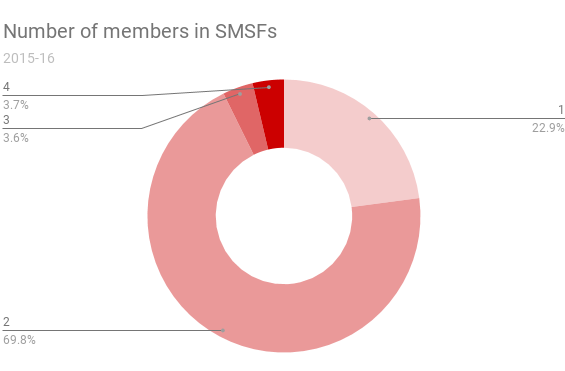Budget 2018: The changes SMSFs need to know
There was a sigh a relief when the budget revealed there would be no major changes to superannuation, but it still pays to examine measures that passed under the radar and how they could affect you.
After years of tinkering, and cries from the industry of "hands off our super", there was a collective sigh of relief when Scott Morrison confirmed in Budget 2018 that there would be no major changes were announced to superannuation. But it still pays to examine measures that passed under the radar and how they could affect you.
Morningstar reporter Emma Rapaport attended a media roundtable with accounting firm HLB Mann Judd to discuss the key budget takeaways for trustees.
Member limit lifted from four to six
The budget confirmed an earlier announcement from Financial Services Minister Kelly O'Dwyer that the number of members allowed in an SMSF would be expanded from four to six.
O'Dwyer said the change would allow for greater flexibility and that, given the growth in the sector, would “ensure SMSFs remain compelling retirement savings vehicles into the future”.
This reform will remove the four-member cap on SMSFs and and will begin on July 1, next year. SMSFs in Australia are predominantly made up of two people – the classic “mum and dad” fund. This reform could potentially now include four children as well.
HLB Mann Judd director and head of SMSF Andrew Yee concedes the reform will allow greater flexibility for larger families but he questions the impact it will have on the industry.
"We don't think that will change too much in terms of people taking up SMSFs because by and large currently it's two-member funds anyway," Yee said.
"It does, however, add flexibility to the structure because for a family unit with more than two children, they can now all fit in the same fund."
Yee says the reform will benefit families who want to use their SMSF to buy a large, non-traditional investment such as property.
"With more members you can get more money into the super fund, and if you have a large asset that you need to invest in you've got an extra member," Yee said.
"With caps always reducing over time this may be an avenue to get money into that SMSF structure to provide that extra flexibility in those non-traditional investments."
"I don't see it being used often, but it’s handy to have."

Source: Australian Taxation Office
But Yee fears a six-member SMSF account could be an administrative nightmare for accountants. Building an investment portfolio that suits everybody would be a challenge, let alone reaching a consensus on decision-making, and signing off on the annual account.
The idea of increasing the number of SMSF trustees, or changing the definition to say “all members of a family regardless of number”, was first suggested — but not accepted — during the 2009-10 Cooper review.
Switch to triennial audit cycle
Hidden among the mountain of budget papers was a crucial detail, missed by many commentators: from July 1, next year the government will allow SMSFs to move from an annual audit cycle to a three-year cycle.
The measure will apply to funds with a good history of compliance, which is loosely defined as three consecutive years of unblemished audit reports and timely lodgement of annual returns.
Reactions to the measure have been mixed. SMSF Association chief executive John Maroney describes the red-tape-cutting measure as a “positive step” and a “fitting reward for trustees who strictly adhere to the regulatory regime”.
Others, including accounting firm BDO Australia, fear that reducing red tape could result in an increase in inadvertent and unrecognised SMSF non-compliance.
“This could ultimately lead to increased costs for SMSFs to rectify longer outstanding non-compliance matters,” BDO warned.
Yee says the reduction will be a welcome change for compliant SMSFs: “There’s only a small proportion of funds doing the wrong thing so why impose high levels of compliance and the costs associated on them?”
He even suggests the measure could be a precursor to the removal of audits for SMSFs in the future.
HLB Mann Judd partner, personal wealth management, Michael Hutton also dismissed fears that two years without audits may lead to compliance issues being left behind.
“SMSFs will still be required to complete quarterly reporting, yearly tax returns, and give in minutes and resolutions and investment strategies,” Hutton said.
“There will be a tune-up every year when they go to their accountant.”
Hutton, however, was bemused by the scaling back of the oversight, noting: “[The government] has never been shy of increasing red tape and now they’re reducing it?”
“We didn't see this coming. We don’t know what’s motivating it.”
More from Morningstar
• Make better investment decisions with Morningstar Premium | Free 4-week trial
Emma Rapaport is a reporter for Morningstar Australia.
© 2018 Morningstar, Inc. All rights reserved. Neither Morningstar, its affiliates, nor the content providers guarantee the data or content contained herein to be accurate, complete or timely nor will they have any liability for its use or distribution. This information is to be used for personal, non-commercial purposes only. No reproduction is permitted without the prior written consent of Morningstar. Any general advice or 'class service' have been prepared by Morningstar Australasia Pty Ltd (ABN: 95 090 665 544, AFSL: 240892), or its Authorised Representatives, and/or Morningstar Research Ltd, subsidiaries of Morningstar, Inc, without reference to your objectives, financial situation or needs. Please refer to our Financial Services Guide (FSG) for more information at www.morningstar.com.au/s/fsg.pdf. Our publications, ratings and products should be viewed as an additional investment resource, not as your sole source of information. Past performance does not necessarily indicate a financial product's future performance. To obtain advice tailored to your situation, contact a licensed financial adviser. Some material is copyright and published under licence from ASX Operations Pty Ltd ACN 004 523 782 ("ASXO"). The article is current as at date of publication.

